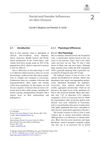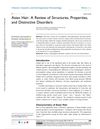Mixed Group
January 2011
dissecting cellulitis folliculitis keloidalis follicular rupture sebaceous material keratinous material hair keratin fragments inflammatory response neutrophilic lymphocytes plasma cells foreign body giant cells granulomas sinus tract formation folliculitis decalvans tufted folliculitis bacterial pathogens follicular occlusion triad acne conglobata hidradenitis suppurativa
TLDR Dissecting cellulitis and folliculitis keloidalis cause intense inflammation without bacterial infection.
The document discussed the inflammatory processes involved in dissecting cellulitis and folliculitis keloidalis, which were secondary to follicular rupture and the release of sebaceous and keratinous material, as well as hair keratin fragments. This led to an intense inflammatory response, initially neutrophilic, later involving lymphocytes, plasma cells, and foreign body giant cells, with granulomas potentially forming around hair keratin fragments. Sinus tract formation was prominent in dissecting cellulitis but rare in folliculitis keloidalis. Unlike other conditions such as folliculitis decalvans and tufted folliculitis, bacterial pathogens were not usually found in this mixed group. Dissecting cellulitis was considered part of the follicular occlusion triad, which included acne conglobata and hidradenitis suppurativa, while the pathogenesis of folliculitis keloidalis was not well understood.




